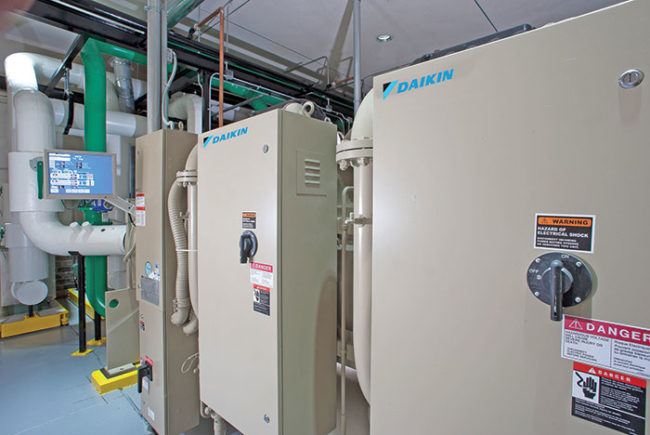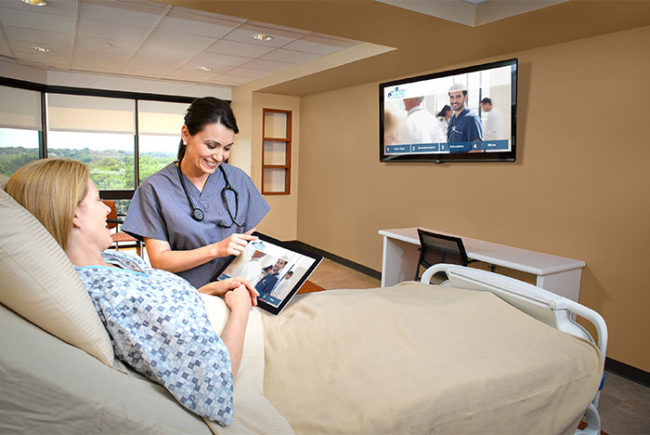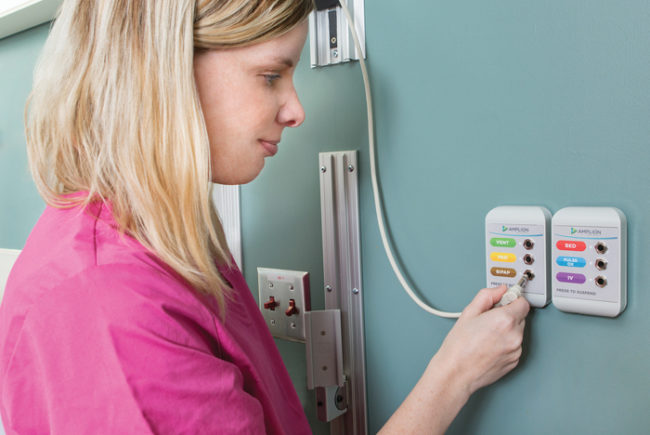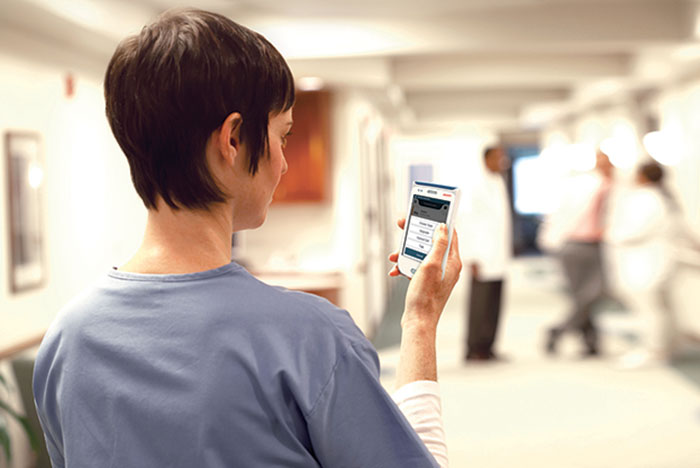
The latest advances in nurse communication systems enable streamlined, customized communication among patients, clinicians and caregivers to enhance patient satisfaction and improve quality of care.
The application of mobile handsets is improving call system effectiveness by adding real-time communication and data capture to monitor both staff and patient activity. IP-based health care communication solutions, which leverage session initiation protocol (SIP) and voice over internet protocol (VoIP) technologies that utilize smartphones, are examples of new technology that allow nurses to instantly communicate with one another and their patients.
Expanded functionality
“Nurse call systems used to be somewhat limited in their functionality,” says Sanmitra Iwanski, marketing manager, Mobile Digital Health, GE Healthcare, Milwaukee. “With the advent of smart digital devices, nursing workflows can be simplified by enabling them to have intra- and inter-team communication and patient-triggered calls, as well as integrated access to clinical data such as labs, vitals and continuous monitoring data.”
You may also like |
| Planning for advanced nurse communication systems |
| Hospital technology system commissioning |
| Survey finds wireless applications booming in hospitals |
|
|
The need for this technology is great, according to manufacturers that supply the nation’s hospitals. In today’s health care environment, nurses need more than single-point communication tools; they need a communication and collaboration platform that connects them to each other and to information.
“In acute care settings, where patients transfer between departments and are handed off to different care teams, it is critical that caregivers have quick access to each other and are able to share information in a secure way,” says Rhonda Collins, MSN, R.N., chief nursing officer, Vocera, San Jose, Calif.
Integration with other data and communication systems is a key development in the evolution of nurse communication systems. Many nursing workflow and mobility software/hardware providers are integrating their features with each other. One result is the ability to view a variety of patient data platforms on a single device using app functionality.
Open integration is the cornerstone of Responder 5, a system available from Rauland, a division of Ametek Inc., Mount Prospect, Ill. “That’s what hospitals are requesting because multiple systems must work together to help manage the patient experience. All of the valuable data related to the patient, across all systems, need to come together for the proper decision-making to occur,” says Jennifer Holden, vice president of product strategy.
The only way to achieve those improvements is by leveraging all of the disparate systems. “That’s why you’re seeing intelligent nurse call solutions move from just integrating beds or just integrating phones to integrating directly into the electronic health record (EHR) and other clinical decision-making and related software systems,” Holden continues.
Innovative solutions
Among other innovations, the clinical workflow solutions division of Hill-Rom, Cary, N.C., has launched Care Sign, which features a digital touchscreen that sits outside the patient room and displays real-time information such as patient risks, allergies and precautions to help improve patient care and communication.
“Today, paper signs blanket the health care environment,” says Trey Cook, general manager and vice president. “However, signs often are inaccurate and held over from one patient to the next. The Hill-Rom Care Sign corrects this problem by integrating with the EHR to provide real-time, accurate data that support key hospital initiatives such as improving patient satisfaction.”
West-Com Nurse Call Systems Inc., Fairfield, Calif., has developed an integrated-solution approach that uses the Novus platform to provide communication among different devices and software applications. One segment, the patient engagement solution, is designed to reduce patient anxiety by visually acknowledging requests for assistance.
“It can answer family members’ and patients’ frequently asked questions, such as, ‘Is it time for my pain meds?’ or ‘What is my goal today?’” says Marc Peters, director of marketing and health care solutions. “It also communicates with patients and family members about precautions, known allergies, conditions, care plans and goals.”
West-Com’s Patient CareBoard receives and displays relevant patient and staffing information from the nurse call and the other integrated hospital systems. The touch-screen stations allow staff members to schedule rounds and set additional precautions, allergies and conditions not included in the EHR integration. Staff members receive rounding notifications and patient calls via their wireless devices.
Amplion, Nashville, Tenn., offers nurse call capabilities, care collaboration tools, alarm management, reporting and data analytics as a unified software platform. Its multipoint notification system utilizes smartphones, hallway monitors, automated messaging and unlimited escalation to improve the flow of information, close the loop on care and promote teamwork, the company reports.
“Amplion Alert tracks in real time what’s happening at the patient’s bedside, documenting every step of the care communication and delivery process. The point-of-care data it collects flow into a dynamic reporting portal that hospital leaders can use to improve workflow, conduct service recovery, identify training opportunities and pinpoint best practices,” says Tom Stephenson, president and CEO.
The open-source platform includes remote monitoring and support. An enhancement called Overwatch monitors the health of all in-room devices remotely. It shows users exactly which component lights are on or off and which alerts are sounding. When issues occur, the team can log in remotely, quickly identify the source of the problem and resolve it.
The new Inform emergency call system from Cornell Communications Inc., Milwaukee, utilizes touch-screen iPod handsets, so staff can receive calls for assistance and communicate via voice or text to other staff members, providing quick responses to patient needs. “When care staff can talk and text with their peers, indicating what the patient or resident needs, accountability is enhanced. Also, because Inform is Wi-Fi-based, new revenues can be generated for internet connectivity and telephone service at a lower cost,” says JJ Johnson, CEO.
Through a partnership with Ascom, Tyco SimplexGrinnell, Westminster, Mass., offers the Telligence Nurse Call Communication System, a middleware platform and a full suite of mobility solutions. The Telligence system is equipped with programmable touchpoints and color-coded indicators, which allow each department to create its own unique system.
“The Ascom end-to-end solution improves clinical staff efficiency by integrating nurse calls with mobile phones and pagers, helping to deliver information to mobile caregivers when and where it is needed,” says Maureen Lally, vice president of marketing, North America Integrated Solutions and Services at Tyco.
Patient-flow issues
The latest nurse communication systems are designed to address important patient and staff-flow issues. “Knowing where patients and staff are, and what their current needs are, can significantly impact care delivery priorities and satisfaction,” Holden says. “Nurse communication, however, is only part of the larger solution to help manage staff-flow issues. Responses to patient needs must be managed based on caregiver availability, the required role and the specific need.
“A robust workflow engine has to consider these changing dynamics,” Holden continues. “It must differentiate the needs of the patient and staff against the time of day. It has to know, for example, that if a staff member goes on break, what call types should be routed to which staff, according to the different types of calls and needs and who is currently on duty while that staff member is on break.” An effective system also must address what to do when one staff member is busy with another patient and then route requests to others on the care team as needed.
The best nurse communication systems provide insight into how much time caregivers spend in direct patient care and where else they are spending their time. This provides managers with data on what their staff are doing, and allows them to make changes that drive desired behavior, according to Cook of Hill-Rom.
“Our system is able to intelligently route calls so that caregivers can meet patient needs more quickly,” Cook says. “For example, if a patient is calling because he is thirsty, the system automatically can send that call to a nursing assistant. If a patient is in pain, the system can automatically route that call to the assigned nurse. The right person is notified with the right level of information, which saves everyone time and improves patient care.”
The Vocera Communication Platform has improved efficiency at Halifax Health, a medical provider in Daytona Beach, Fla. In the hospital’s France Tower, where each floor is the size of a football field, the Vocera system makes it easier for clinical staff members to locate their colleagues and it reduces the distances they walk each day. It also reduces overhead paging, which creates a quieter environment.
In addition, Halifax Health has integrated the Vocera Communication Platform with several clinical systems, including the hospital’s EHR and patient-flow systems. Integration with the EHR enables discharge notifications to be sent automatically to the right care team members via their smartphones or hands-free communication badges as soon as the physician’s orders are entered. After this integration, Halifax Health reported an 8 percent decrease in the time it takes to discharge a patient from the oncology unit, according to Collins.
The Provider 790 Nurse Call System from Jeron Electronic Systems Inc., Niles, Ill., features clear VoIP digital/full‐duplex audio, wireless phone, pocket-pager integration and automated alerting. One-touch workflow streamlines procedures among staff, within and across departments, according to Myles Cochran, director of marketing. For example, touch-screen workflow terminals provide complete nurse console functionality to answer calls and initiate staff-to-staff and staff-to-patient communication. To eliminate alarm fatigue, Jeron’s Provider Nurse Call System can immediately alert caregivers directly and silently via their wireless devices or traditionally at the nurse’s station console.
Looking ahead
Further integration of technology will provide mobility and data quickly to different kinds of medical facilities — ranging from hospitals to remote clinics.
“Future advances will include monitoring all staff activities, planned and unplanned — allowing assessment and monitoring of total staff time required per patient,” says Johnson. “Also, data analytics will provide predictive information on potential patient risks.”
Holden expects to see continued development of voice activation of commands and requests within and among hospital systems. This will allow for more hands-free interactions among caregivers and patients.
Neal Lorenzi is a freelance writer based in Mundelein, Ill.
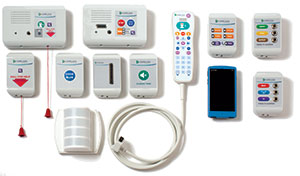
DIRECT CONNECTION
Clinical devices plug into the Amplion Alert system, sending immediate notifications to the appropriate caregiver's phone. Amplion
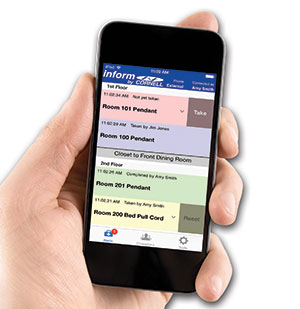
PERSONAL TOUCH
The Inform emergency call system utilizes touch-screen iPod handsets. Cornell Communications Inc.
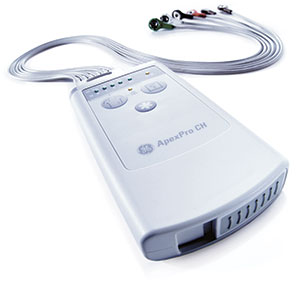
BUILT FOR GROWTH
ApexPro CH telemetry offers a flexible system to meet the current and future telemetry needs of growing hospitals. GE Healthcare
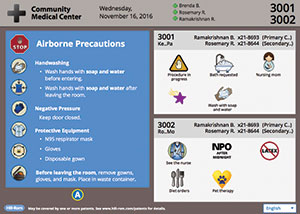
QUICK SNAPSHOT
Digital touchscreens outside the patient room provide real-time, accurate information about patient risks, allergies and precautions. Hill-Rom, Clinical Workflow Solutions division
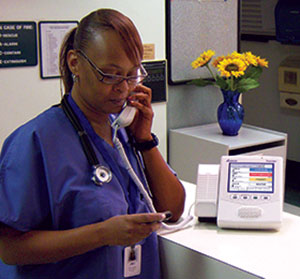
SYSTEM OF CARE
The scalable and networked-based design of the Provider 790 streamlines communication to improve patient care and staff satisfaction while minimizing installation and maintenance costs. Jeron Electronic Systems Inc.
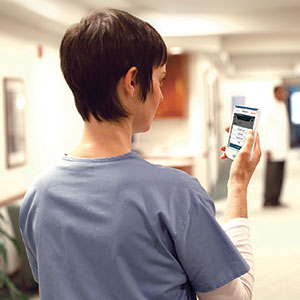
TEAM EFFORT
Mobile technology can improve communication between nurses and patients, and internal communication among nurses, doctors and staff in different departments. Tyco SimplexGrinnell
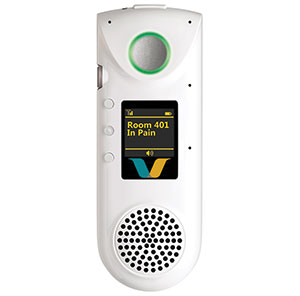
ON ALERT
This communication badge is a wearable, voice-controlled device that enables nurses to connect instantly and hand-free for two-way or one-to-many conversations. It also integrates with many clinical systems, including electronic health records, nurse call systems and physiologic monitors. Vocera
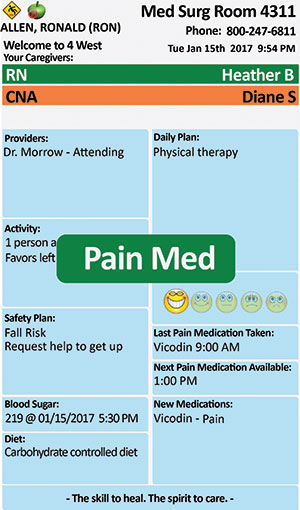
CLEAR COMMUNICATION
CareBoard engages patients and families in their care and provides patients with visual assurance that their calls have been received. West-Com Nurse Call Systems Inc.



